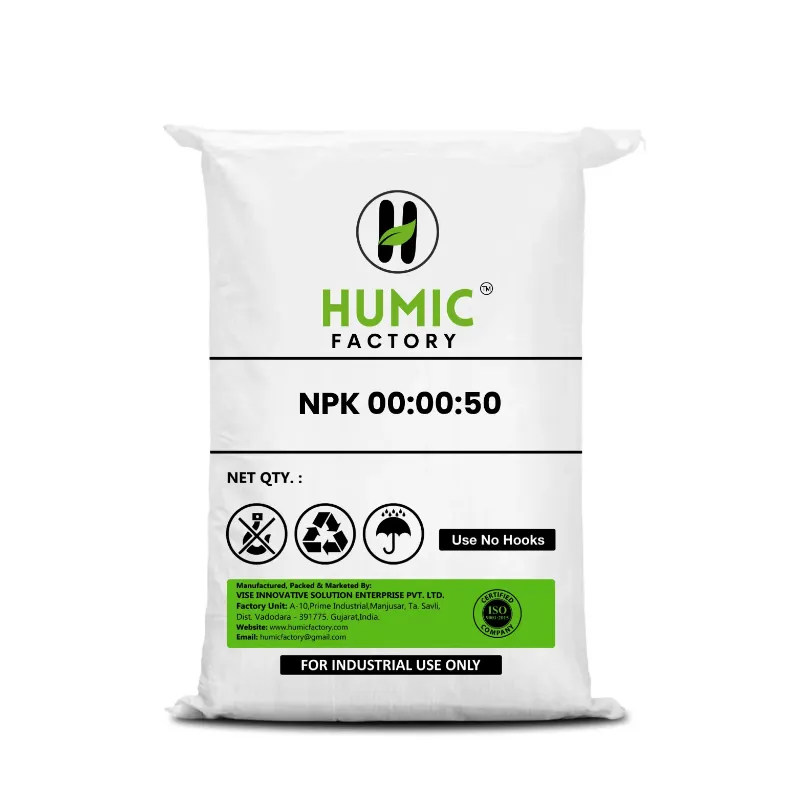When it comes to promoting healthy plant growth, NPK fertilizers play a crucial role. These fertilizers supply plants with the three essential nutrients—nitrogen (N), phosphorus (P), and potassium (K)—that are critical for development. Two popular options that many farmers use are NPK 20:20:20 and NPK 19:19:19, but what sets them apart? How do they compare in helping plants achieve balanced growth? Let’s break down their similarities, differences, and how to make the right choice for your crops. The numbers on an NPK fertilizer indicate the percentage of each nutrient present in the formula. So, for NPK 20:20:20, the fertilizer contains: Similarly, NPK 19:19:19 has: These three nutrients are essential for balanced growth: Though the difference in nutrient percentages seems small, it can impact the growth of your plants in subtle but important ways. While both NPK fertilizers provide balanced nutrition, the slight difference in the ratio can affect how and when you use them. Concentration of Nutrients:
Balanced growth means ensuring that your plants get the right amount of nitrogen, phosphorus, and potassium throughout their life cycle. Here’s how each nutrient plays its part: Both NPK 20:20:20 and NPK 19:19:19 fertilizers provide a balanced ratio of these nutrients, making them effective for a wide range of crops. However, choosing the right fertilizer depends on your crop’s stage of growth, soil conditions, and nutrient requirements. To get the most out of your NPK fertilizer, it's essential to know when and how to apply it. Here are a few tips to ensure your plants receive balanced nutrition: To optimize the effectiveness of your NPK fertilizer, you can pair it with Humic Factory’s biofertilizers. Products like humic acid improve soil structure, increasing its ability to hold onto nutrients and water. This means your plants can access the nutrients from the NPK fertilizer more effectively. Moreover, biofertilizers improve microbial activity in the soil, which helps break down organic matter and release nutrients in a form that plants can easily absorb. Whether you’re using NPK 20:20:20 or NPK 19:19:19, biofertilizers enhance their performance, leading to healthier, more productive crops. So, which is better for your crops—NPK 20:20:20 or NPK 19:19:19? Both NPK 20:20:20 and NPK 19:19:19 are excellent choices for promoting balanced plant growth, each with its specific advantages. The key to achieving optimal results is understanding your soil and crop needs and selecting the right fertilizer to match. And don't forget, pairing your NPK fertilizer with Humic Factory’s biofertilizers can give your plants an extra boost, improving nutrient uptake and supporting healthier, more resilient growth. Whether you’re aiming for stronger roots, healthier leaves, or abundant fruits, using the right mix of fertilizers and organic solutions can help you achieve the results you want. At the end of the day, farming is about balance. By using NPK 20:20:20, NPK 19:19:19, and the right biofertilizers, you can ensure your crops receive the perfect combination of nutrients for their growth and productivity.The Basics: What Do the Numbers Mean?
Key Differences Between NPK 20:20:20 and NPK 19:19:19
2. Flexibility in Application:
3.Cost and Efficiency:Supporting Balanced Plant Growth with NPK Fertilizers
How to Maximize NPK Fertilizer Effectiveness
Integrating Humic Factory’s Biofertilizers for Healthier Crops
Choosing the Right NPK Fertilizer for Your Crops
Conclusion: Balancing Growth with the Right Fertilizer


Submit your contact number to receive exclusive updates
Something went Wrong Please try again!!!
Bulk Purchase
Get Bulk Discount
Get Discount Code now
फोन नंबर सबमिट करे और ऑफर पाए
We believe farming is hard. This is our attempt to support farmers. Submit your contact details to receive a discount and other offers from Humic Factory.

Recommended Products
COPYRIGHT © 2024. All Rights Reserved By Humic Factory


